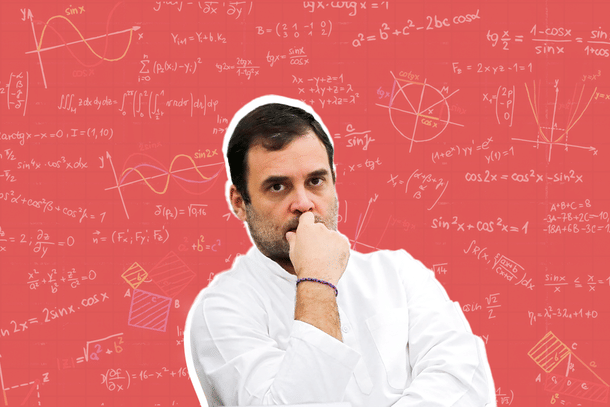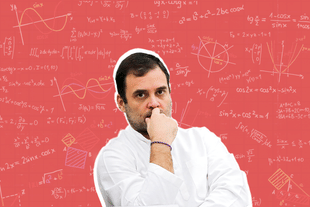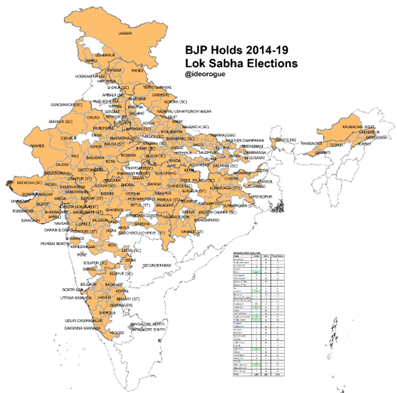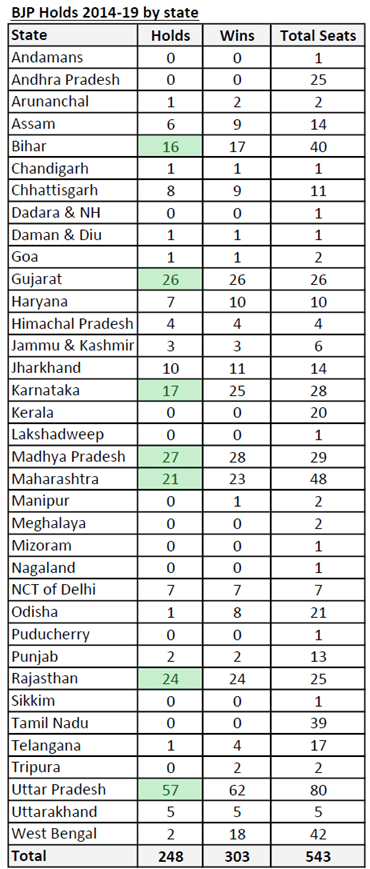Politics
Rahul Gandhi's Bold 'Do The Math' Prediction For 2024 Election Crumbles Under Scrutiny
Venu Gopal Narayanan
Jun 05, 2023, 11:14 AM | Updated 05:51 PM IST
Save & read from anywhere!
Bookmark stories for easy access on any device or the Swarajya app.


Congress leader Rahul Gandhi, who is presently on a tour of America, believes that his party will do very well in the general elections of 2024. “Just do the math, a united opposition will defeat the BJP on its own,” he says.
A recent analysis by Swarajya shows that the Bharatiya Janata Party (BJP) is very much the party to beat. Of the 303 seats they won in 2019, 248 were holds (seats which they also won in 2014).
Focus has been restricted to the BJP alone, and not its national alliance, because its links with allies have changed in the past four years. For example, Nitish Kumar has broken links with the BJP in Bihar, as have the Akali Dal in the Punjab, and it is a new Shiv Sena in Maharashtra. That is 61 seats in three states alone, which the BJP will have to contest with a fresh strategy.
Consequently, if opposition parties intend to deny the BJP a simple majority, and a third term, they would have to win at least 60 of these firewall seats from the BJP. This is because the BJP already has a buffer of 31 seats, and one can expect it to gain about as much next year.
The geographical distribution of these 248 firewall seats is shown in a map below:

The state-wise details are given in a table below:

Next, a detailed tranche-wise analysis of the BJP’s win margins in these 248 holds, in the 2019 elections, was carried out to assess the true strength of the party’s victory.
The results are presented in a table below at the national level, and also separately for Uttar Pradesh, because it is both the largest state, and the largest contributor to the BJP’s kitty:

The results are interesting because we see that just 19 of these 248 holds can be classified as narrow victories (where the win margin was less than 5 per cent). And 11 of the 19 are in Uttar Pradesh.
Now, even if we add the 5-10 per cent margin tranche, which is 27 seats, the national total only goes up to 46 seats. That is still below the 60 firewall seats the opposition would need to comprehensively dislodge the BJP.
Of course, this is still only a one-sided calculation done merely for argument’s sake, in which we generously assume that the opposition could pick up those seats which the BJP held in 2019 by small margins.
But in reality, 19 of these 46 seats are in Uttar Pradesh, where the BJP won against an alliance of the Samajwadi Party (UP), the Rashtriya Lok Dal (RLD), and the Bahujan Samaj Party (BSP).
The state hadn’t seen such a high index of opposition unity since the 1977 elections, and it won’t in 2024, because the BSP has already declared that it will contest the elections alone.
Further, the Congress has been wiped out in all of Uttar Pradesh, save their rump vote in Amethi and Rae Bareli, so the situation won’t change even if it allies with the SP.
In contrast, 202 of the BJP’s 248 holds in 2019 are solid wins, of which, 173 are thumping victories where the BJP won by a victory margin of more than 20 per cent. And that’s not counting the BJP’s 55 gains in 2019, 18 of which were by excellent margins.
Thus, we see that if a mandate is to be firmly denied to the BJP, a united opposition would have to directly attract at least 10-15 per cent of the vote in over 60 BJP firewall seats. Any reduction in opposition unity will make this task that much more difficult, leaving the advantage with the BJP.
Now, having studied some ways in which the BJP might lose, the balance has to be evened, because it is not as if the non-BJP seats are resolute opposition holds. Again, the numbers are rather interesting.
In 2019, the BJP lost 17 seats by a margin of less than 5 per cent. Four of these seats were in West Bengal, three in Odisha, and two in Uttar Pradesh – all states in which the BJP has an opportunity to improve its vote share.
They lost 22 by a margin of 5 to 10 per cent. Eight of these seats were in West Bengal, six in Uttar Pradesh (remember: peak index of opposition unity in 2019), and three in Odisha. That’s a total of 39 seats which could potentially offset the BJP’s 46 which the opposition may eye.
So, we’ve ‘done the math’, precisely as Mr Gandhi advised, and our findings don’t add up to anywhere near his forecast.
Instead, what we see is that unless a united opposition is able to successfully attract a sizeable portion of votes from the BJP in core areas, while preventing the BJP from making gains in areas where they lost out by small margins in 2019 (many of which are areas where the Congress either doesn’t exist, or won’t be able to engineer alliances), it will be difficult for them to prevent the BJP from securing a simple majority for a third time.
Read the first part here.
Venu Gopal Narayanan is an independent upstream petroleum consultant who focuses on energy, geopolitics, current affairs and electoral arithmetic. He tweets at @ideorogue.




